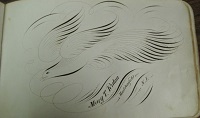Puentedura's already famous SAMR model posits that in "Substitution" technology simply replaces another tool. In my years of teaching, most tech adaptations and introductions have largely existed in this stage. Examples abound, digital worksheets, online quizzes such as Kahoot, or even attendance taking via computer more or less replace what existed before it with little modifications. The digitizing of the teacher's workflow has done little to move technology use beyond Substitution into Augmentation. I'm just not that interested any longer in tools such as epackback even as I recognizes their potential power if all aspects these tools are leveraged.
A couple of years ago, I was outraged at the amount of printing teachers were still doing. Okay, I admit, it still bothers me, but I want to spend my time and energy as a tech integration specialist moving people into thinking about ways technology allows for significant task redesign. And it doesn't matter much to me if the paper flow is electronic or digital if the paper is still written for an audience of one.
 |
| from Kathy Shrock's Guide to Everything |
I was just speaking with my school's archivist. Yes, we have an archivist! In the 19th century, my school had a famed
writing master. The archivist showed me examples of his beautiful work. Below is an exquisite cover page he wrote for a student's autograph book. Yet, his amazing skill has long been seen as not essential for students. Very few question this today.
I fear that so much of what ed technology companies are pushing to schools gets no further than the Augmentation step (at best). We aren't letting go the 20th century equivalent of the writing master.
I was thinking about all of this as I read this
article . Technology affords us such possibilities! Yet, we have to questions some fundamental assumptions about teaching and learning if we think that technology is going to be "transformative".


No comments:
Post a Comment